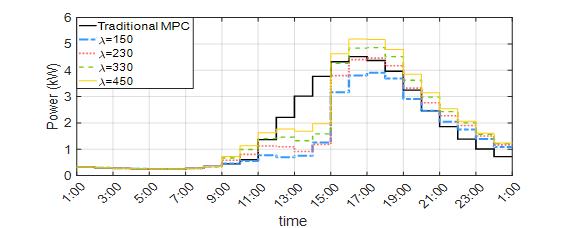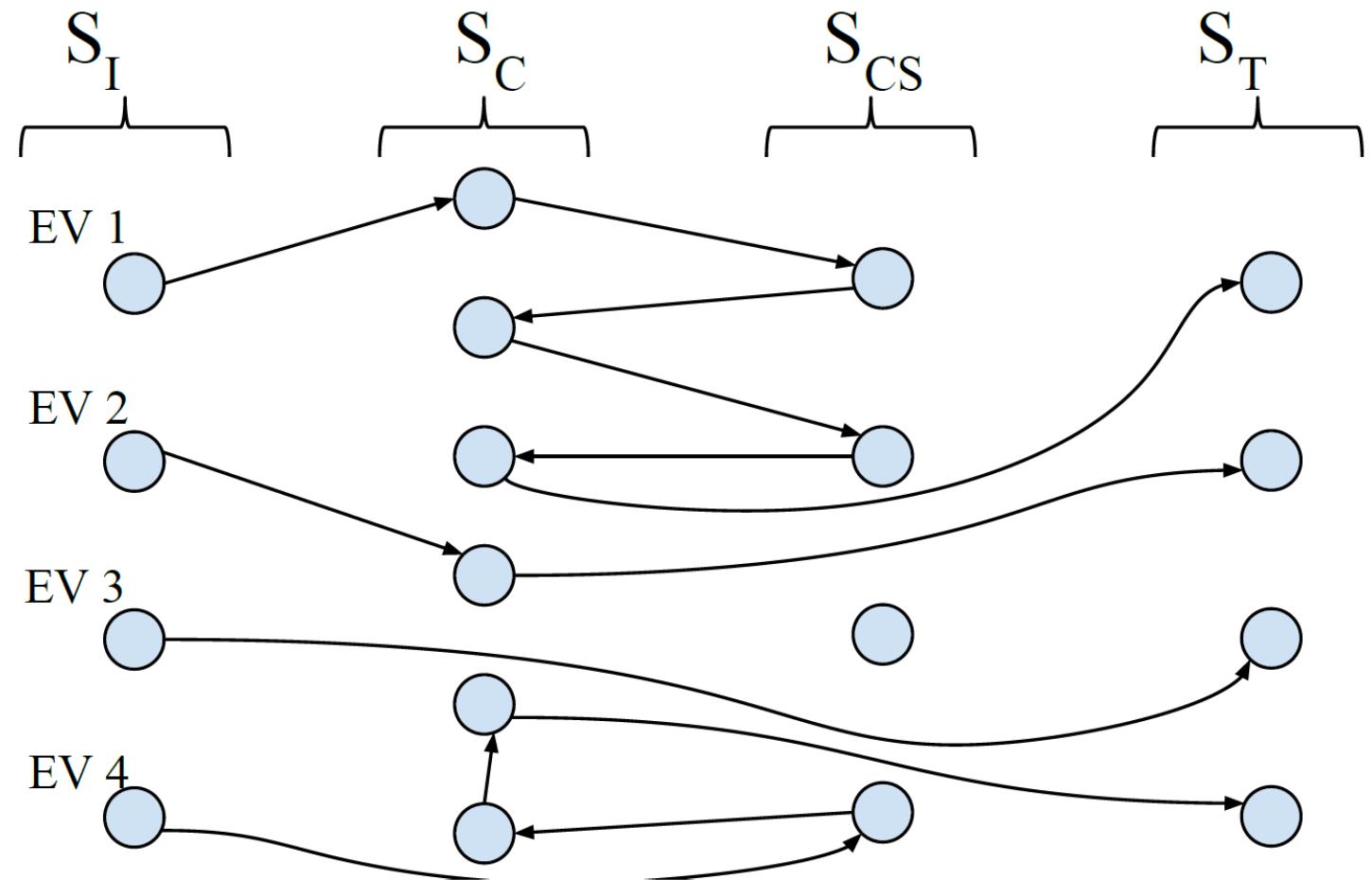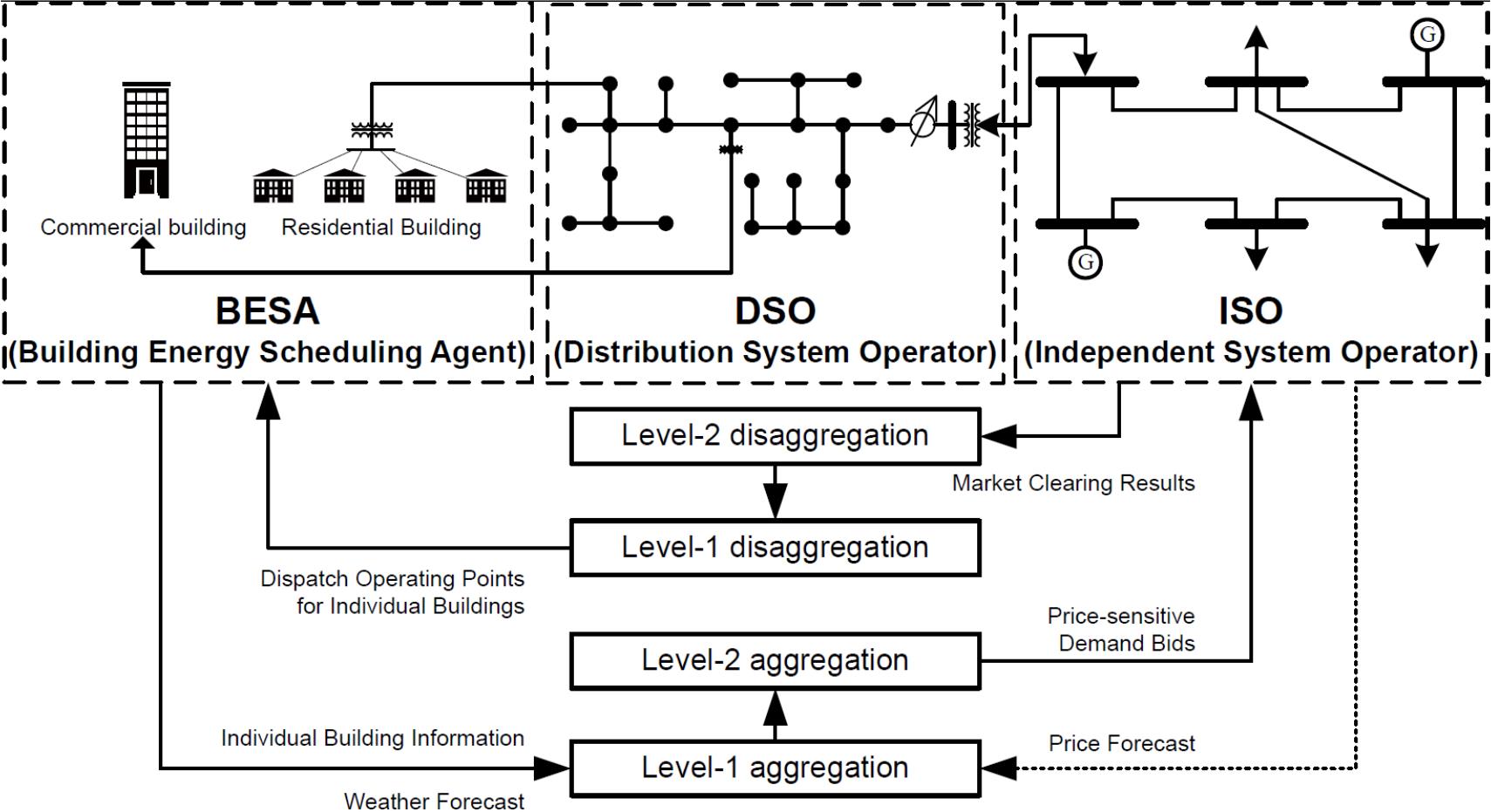-
Energy Efficient Smart Buildings
Energy Efficient Building HVAC Control with Real-time Occupancy Prediction
In residential and commercial buildings, HVAC system, plug loads and lighting loads consume majority of the electricity. In particular, HVAC systems account for around 50% of the total building energy consumption. Given that more and more buildings are controlled by Building Automation System (BAS), one of the most effective ways of reducing the energy consumption of the HVAC system is to improve the existing building control strategies
A novel energy saving control strategy for building HVAC system is proposed by embedding the occupancy prediction algorithm into the MPC framework. A logistic regression model with change-points is proposed to forecast the building occupancy state
The proposed forecasting algorithm outperforms the simple proportion method and the Markov Chain algorithm. Numerical simulations are carried out to investigate the effectiveness of the proposed control strategy. The simulation results show that the real-time occupancy based building HVAC control algorithm not only improves the building occupants’ comfort level but also reduces the electricity consumption
Power Consumption Under Different Scenarios (Our Proposed Algorithm Outperforms Traditional Model Predictive Control)

Publications
[C10] Jie Shi, Nanpeng Yu, and Weixin Yao, "Energy Efficient Building HVAC Control with Real-Time Occupancy Prediction," 8th International Conference on Sustainability in Energy and Buildings, pp. 1-10, Turin, Italy, 2016.
Ride-sharing with Electric Vehicle
How to Route Electric Vehicle Fleet for Ride-sharing?
Providing ride-sharing services with an electric vehicle (EV) fleet can significantly enhance urban mobility, reduce transportation sector energy consumption, and improve air quality.
We developed an EV fleet routing algorithm for ride-sharing services. The EV fleet routing problem is rigorously formulated on a complete directed graph as a mixed integer nonlinear programming problem. The intrinsic characteristics of the EV routing problem allow us to transform the optimization formulation into an equivalent mixed integer linear programming problem.
Our proposed method is capable of finding globally optimal EV routes to provide ridesharing services. The simulation results also reveal a trade-off between customer waiting time and total distance traveled by the EV fleet.
The EV fleet routing problem is equivalent to finding the set of active edges in a complete directed graph. A sample routing schedule is shown below.

Publications
[C25] Jie Shi, Yuanqi Gao, and Nanpeng Yu, " Routing Electric Vehicle Fleet for Ride-sharing," in the 2nd IEEE Conference on Energy Internet and Energy System Integration, pp. 1-6, 2018.
Coodinate the Operations of DERs and Provide Services to Power Grid
How to Coordiante the Operations of Distributed Energy Resources?
Uncoordinated energy management of a large number of buildings in a distribution feeder can push power distribution systems into the emergency states where operating constraints are not completely satisfied.
We developed a bi-level building load aggregation methodology to coordinate the operations of heterogeneous smart buildings of a distribution feeder.
Our proposed methodology not only reduces the electricity costs of buildings but also guarantees that all the distribution operating constraints such as the distribution line thermal limit, phase imbalance, and transformer capacity limit are satisfied.
Coordinated Smart Building Operation with bi-level aggregation/disaggregation.

Publications
[J19] Yang Liu, Nanpeng Yu, Wei Wang, Xiaohong Guan, Zhanbo Xu, Bing Dong, and Ting Liu, "Coordinating the Operations of Smart Buildings in Smart Grids," in press, Applied Energy, 2018.